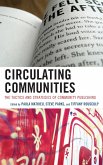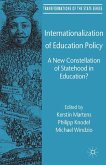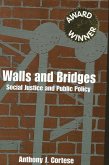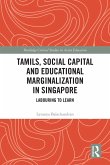- Gebundenes Buch
- Merkliste
- Auf die Merkliste
- Bewerten Bewerten
- Teilen
- Produkt teilen
- Produkterinnerung
- Produkterinnerung
In recent years, schools across North America, serving vastly distinct communities, have been subject to strikingly similar waves of neoliberal policies by governments that are reshaping the nature of teachers’ work.
Andere Kunden interessierten sich auch für
![Circulating Communities Circulating Communities]() Circulating Communities155,99 €
Circulating Communities155,99 €![Internationalization of Education Policy Internationalization of Education Policy]() Kerstin MartensInternationalization of Education Policy81,99 €
Kerstin MartensInternationalization of Education Policy81,99 €![Change Forces With A Vengeance Change Forces With A Vengeance]() Michael FullanChange Forces With A Vengeance60,99 €
Michael FullanChange Forces With A Vengeance60,99 €![Female Students and Cultures of Violence in Cities Female Students and Cultures of Violence in Cities]() Female Students and Cultures of Violence in Cities143,99 €
Female Students and Cultures of Violence in Cities143,99 €![Walls and Bridges: Social Justice and Public Policy Walls and Bridges: Social Justice and Public Policy]() Anthony J. CorteseWalls and Bridges: Social Justice and Public Policy109,99 €
Anthony J. CorteseWalls and Bridges: Social Justice and Public Policy109,99 €![The Charter School Solution The Charter School Solution]() The Charter School Solution217,99 €
The Charter School Solution217,99 €![Tamils, Social Capital and Educational Marginalization in Singapore Tamils, Social Capital and Educational Marginalization in Singapore]() Lavanya BalachandranTamils, Social Capital and Educational Marginalization in Singapore206,99 €
Lavanya BalachandranTamils, Social Capital and Educational Marginalization in Singapore206,99 €-
-
-
In recent years, schools across North America, serving vastly distinct communities, have been subject to strikingly similar waves of neoliberal policies by governments that are reshaping the nature of teachers’ work.
Hinweis: Dieser Artikel kann nur an eine deutsche Lieferadresse ausgeliefert werden.
Hinweis: Dieser Artikel kann nur an eine deutsche Lieferadresse ausgeliefert werden.
Produktdetails
- Produktdetails
- Verlag: University of Toronto Press
- Seitenzahl: 316
- Erscheinungstermin: 20. April 2020
- Englisch
- Abmessung: 236mm x 160mm x 25mm
- Gewicht: 590g
- ISBN-13: 9781487506605
- ISBN-10: 1487506600
- Artikelnr.: 58294441
- Herstellerkennzeichnung
- Libri GmbH
- Europaallee 1
- 36244 Bad Hersfeld
- gpsr@libri.de
- Verlag: University of Toronto Press
- Seitenzahl: 316
- Erscheinungstermin: 20. April 2020
- Englisch
- Abmessung: 236mm x 160mm x 25mm
- Gewicht: 590g
- ISBN-13: 9781487506605
- ISBN-10: 1487506600
- Artikelnr.: 58294441
- Herstellerkennzeichnung
- Libri GmbH
- Europaallee 1
- 36244 Bad Hersfeld
- gpsr@libri.de
By Paul Bocking
Preface
1. Introduction
1.1 What Is Teachers’ Professional Autonomy? Why Is It Important for Public
Education?
1.2 Key Dimensions for Assessing Challenges to Professional Autonomy
1.3 A Geography of Teachers’ Professional Autonomy
1.4 Challenging Professional Autonomy
1.5 Methodology
1.6 Book Overview
2. Geographies of Professional Autonomy and Neoliberalism in North America
Preface: Dia Del Trabajo
2.1 The Emergence of Public Education, Teachers’ Unions, and
Professionalism
2.2 The Postwar Consolidation of Public Education Systems and Teachers’
Unions
2.3 The Neoliberalization of Education: Teacher Unionism on the Defensive
2.4 Transnational Elite Policy
2.5 Counter Hegemonic Continental Networks
3. New York City
Preface: Visiting a Small High School on the Upper West Side
3.1 Structural Changes I: Centralizing Power to Facilitate Neoliberal Fast
Policy
3.2 Structural Changes II: Transforming Workplace Culture
3.3 Teacher Precariousness and the Weakening of the School Site Union and
Professional Autonomy
3.4 Scaling Up: Initiative in Neoliberal Policy Shifts from NYC to Albany
3.5 Cuomo’s Expansion of Standardized Testing into Teacher Evaluation:
Undermining Professional Autonomy
3.6 State of Our Union, State of Our Schools
4. Mexico City
Preface: Teachers’ Day
4.1 Transitions in State Power, Decentralization, and Emergence of Elba
Esther Gordillo’s SNTE as a Key Neoliberal Actor
4.2 Re-Centralized Governance through School-Based Competition
4.3 From Clientelism to a Neoliberalized Teaching Profession
4.4 Enrique Peña Nieto and Fast Policy
4.5 What Makes a Teacher? Marginalizing the Normals and Teacher Education
4.6 Testing Teachers
4.7 Precarious Employment and Professional Autonomy
4.8 Acquiescence, Resistance, and the Challenges of Scaling Up: The CNTE in
the City and the Countryside
5. Toronto
Preface: School Workroom Cultures
5.1 Centralizing Governance: Increasing Ontario Ministry of Education
Control of the Toronto District School Board
5.2 Quantifying Student Achievement: Policy from the Centre
5.3 Quantifying Student Achievement: Impact on the Classroom and
Professional Autonomy
5.4 Quantifying Student Achievement: Intersection of Race, Class, and
School Choice on Teachers’ Work
5.5 Scaling Up: The Centralization of Bargaining and the Negotiation of
Professional Autonomy
6. Conclusion
Preface: Confronting the Neoliberalization of Education
6.1 The Centrality of Teachers’ Professional Autonomy in the Struggle
Against the Neoliberalization of Education
6.2 Teachers’ Unions as Champions of Professional Autonomy
6.3 A Multi Scalar Geography of Teachers’ Professional Autonomy
Appendix: List of Interviews
Bibliography
1. Introduction
1.1 What Is Teachers’ Professional Autonomy? Why Is It Important for Public
Education?
1.2 Key Dimensions for Assessing Challenges to Professional Autonomy
1.3 A Geography of Teachers’ Professional Autonomy
1.4 Challenging Professional Autonomy
1.5 Methodology
1.6 Book Overview
2. Geographies of Professional Autonomy and Neoliberalism in North America
Preface: Dia Del Trabajo
2.1 The Emergence of Public Education, Teachers’ Unions, and
Professionalism
2.2 The Postwar Consolidation of Public Education Systems and Teachers’
Unions
2.3 The Neoliberalization of Education: Teacher Unionism on the Defensive
2.4 Transnational Elite Policy
2.5 Counter Hegemonic Continental Networks
3. New York City
Preface: Visiting a Small High School on the Upper West Side
3.1 Structural Changes I: Centralizing Power to Facilitate Neoliberal Fast
Policy
3.2 Structural Changes II: Transforming Workplace Culture
3.3 Teacher Precariousness and the Weakening of the School Site Union and
Professional Autonomy
3.4 Scaling Up: Initiative in Neoliberal Policy Shifts from NYC to Albany
3.5 Cuomo’s Expansion of Standardized Testing into Teacher Evaluation:
Undermining Professional Autonomy
3.6 State of Our Union, State of Our Schools
4. Mexico City
Preface: Teachers’ Day
4.1 Transitions in State Power, Decentralization, and Emergence of Elba
Esther Gordillo’s SNTE as a Key Neoliberal Actor
4.2 Re-Centralized Governance through School-Based Competition
4.3 From Clientelism to a Neoliberalized Teaching Profession
4.4 Enrique Peña Nieto and Fast Policy
4.5 What Makes a Teacher? Marginalizing the Normals and Teacher Education
4.6 Testing Teachers
4.7 Precarious Employment and Professional Autonomy
4.8 Acquiescence, Resistance, and the Challenges of Scaling Up: The CNTE in
the City and the Countryside
5. Toronto
Preface: School Workroom Cultures
5.1 Centralizing Governance: Increasing Ontario Ministry of Education
Control of the Toronto District School Board
5.2 Quantifying Student Achievement: Policy from the Centre
5.3 Quantifying Student Achievement: Impact on the Classroom and
Professional Autonomy
5.4 Quantifying Student Achievement: Intersection of Race, Class, and
School Choice on Teachers’ Work
5.5 Scaling Up: The Centralization of Bargaining and the Negotiation of
Professional Autonomy
6. Conclusion
Preface: Confronting the Neoliberalization of Education
6.1 The Centrality of Teachers’ Professional Autonomy in the Struggle
Against the Neoliberalization of Education
6.2 Teachers’ Unions as Champions of Professional Autonomy
6.3 A Multi Scalar Geography of Teachers’ Professional Autonomy
Appendix: List of Interviews
Bibliography
Preface
1. Introduction
1.1 What Is Teachers’ Professional Autonomy? Why Is It Important for Public
Education?
1.2 Key Dimensions for Assessing Challenges to Professional Autonomy
1.3 A Geography of Teachers’ Professional Autonomy
1.4 Challenging Professional Autonomy
1.5 Methodology
1.6 Book Overview
2. Geographies of Professional Autonomy and Neoliberalism in North America
Preface: Dia Del Trabajo
2.1 The Emergence of Public Education, Teachers’ Unions, and
Professionalism
2.2 The Postwar Consolidation of Public Education Systems and Teachers’
Unions
2.3 The Neoliberalization of Education: Teacher Unionism on the Defensive
2.4 Transnational Elite Policy
2.5 Counter Hegemonic Continental Networks
3. New York City
Preface: Visiting a Small High School on the Upper West Side
3.1 Structural Changes I: Centralizing Power to Facilitate Neoliberal Fast
Policy
3.2 Structural Changes II: Transforming Workplace Culture
3.3 Teacher Precariousness and the Weakening of the School Site Union and
Professional Autonomy
3.4 Scaling Up: Initiative in Neoliberal Policy Shifts from NYC to Albany
3.5 Cuomo’s Expansion of Standardized Testing into Teacher Evaluation:
Undermining Professional Autonomy
3.6 State of Our Union, State of Our Schools
4. Mexico City
Preface: Teachers’ Day
4.1 Transitions in State Power, Decentralization, and Emergence of Elba
Esther Gordillo’s SNTE as a Key Neoliberal Actor
4.2 Re-Centralized Governance through School-Based Competition
4.3 From Clientelism to a Neoliberalized Teaching Profession
4.4 Enrique Peña Nieto and Fast Policy
4.5 What Makes a Teacher? Marginalizing the Normals and Teacher Education
4.6 Testing Teachers
4.7 Precarious Employment and Professional Autonomy
4.8 Acquiescence, Resistance, and the Challenges of Scaling Up: The CNTE in
the City and the Countryside
5. Toronto
Preface: School Workroom Cultures
5.1 Centralizing Governance: Increasing Ontario Ministry of Education
Control of the Toronto District School Board
5.2 Quantifying Student Achievement: Policy from the Centre
5.3 Quantifying Student Achievement: Impact on the Classroom and
Professional Autonomy
5.4 Quantifying Student Achievement: Intersection of Race, Class, and
School Choice on Teachers’ Work
5.5 Scaling Up: The Centralization of Bargaining and the Negotiation of
Professional Autonomy
6. Conclusion
Preface: Confronting the Neoliberalization of Education
6.1 The Centrality of Teachers’ Professional Autonomy in the Struggle
Against the Neoliberalization of Education
6.2 Teachers’ Unions as Champions of Professional Autonomy
6.3 A Multi Scalar Geography of Teachers’ Professional Autonomy
Appendix: List of Interviews
Bibliography
1. Introduction
1.1 What Is Teachers’ Professional Autonomy? Why Is It Important for Public
Education?
1.2 Key Dimensions for Assessing Challenges to Professional Autonomy
1.3 A Geography of Teachers’ Professional Autonomy
1.4 Challenging Professional Autonomy
1.5 Methodology
1.6 Book Overview
2. Geographies of Professional Autonomy and Neoliberalism in North America
Preface: Dia Del Trabajo
2.1 The Emergence of Public Education, Teachers’ Unions, and
Professionalism
2.2 The Postwar Consolidation of Public Education Systems and Teachers’
Unions
2.3 The Neoliberalization of Education: Teacher Unionism on the Defensive
2.4 Transnational Elite Policy
2.5 Counter Hegemonic Continental Networks
3. New York City
Preface: Visiting a Small High School on the Upper West Side
3.1 Structural Changes I: Centralizing Power to Facilitate Neoliberal Fast
Policy
3.2 Structural Changes II: Transforming Workplace Culture
3.3 Teacher Precariousness and the Weakening of the School Site Union and
Professional Autonomy
3.4 Scaling Up: Initiative in Neoliberal Policy Shifts from NYC to Albany
3.5 Cuomo’s Expansion of Standardized Testing into Teacher Evaluation:
Undermining Professional Autonomy
3.6 State of Our Union, State of Our Schools
4. Mexico City
Preface: Teachers’ Day
4.1 Transitions in State Power, Decentralization, and Emergence of Elba
Esther Gordillo’s SNTE as a Key Neoliberal Actor
4.2 Re-Centralized Governance through School-Based Competition
4.3 From Clientelism to a Neoliberalized Teaching Profession
4.4 Enrique Peña Nieto and Fast Policy
4.5 What Makes a Teacher? Marginalizing the Normals and Teacher Education
4.6 Testing Teachers
4.7 Precarious Employment and Professional Autonomy
4.8 Acquiescence, Resistance, and the Challenges of Scaling Up: The CNTE in
the City and the Countryside
5. Toronto
Preface: School Workroom Cultures
5.1 Centralizing Governance: Increasing Ontario Ministry of Education
Control of the Toronto District School Board
5.2 Quantifying Student Achievement: Policy from the Centre
5.3 Quantifying Student Achievement: Impact on the Classroom and
Professional Autonomy
5.4 Quantifying Student Achievement: Intersection of Race, Class, and
School Choice on Teachers’ Work
5.5 Scaling Up: The Centralization of Bargaining and the Negotiation of
Professional Autonomy
6. Conclusion
Preface: Confronting the Neoliberalization of Education
6.1 The Centrality of Teachers’ Professional Autonomy in the Struggle
Against the Neoliberalization of Education
6.2 Teachers’ Unions as Champions of Professional Autonomy
6.3 A Multi Scalar Geography of Teachers’ Professional Autonomy
Appendix: List of Interviews
Bibliography








